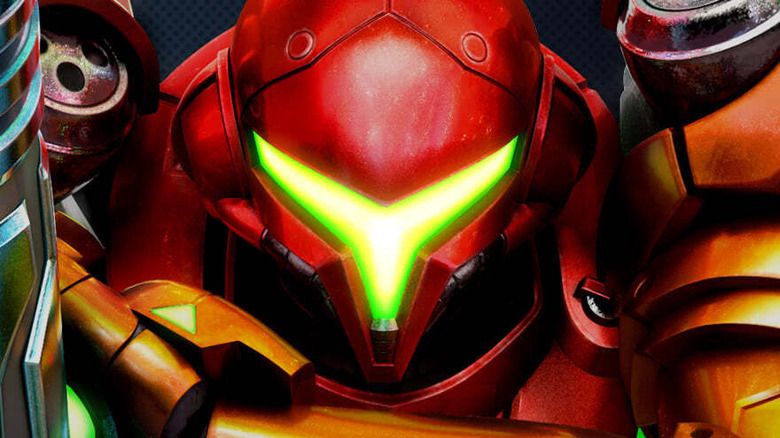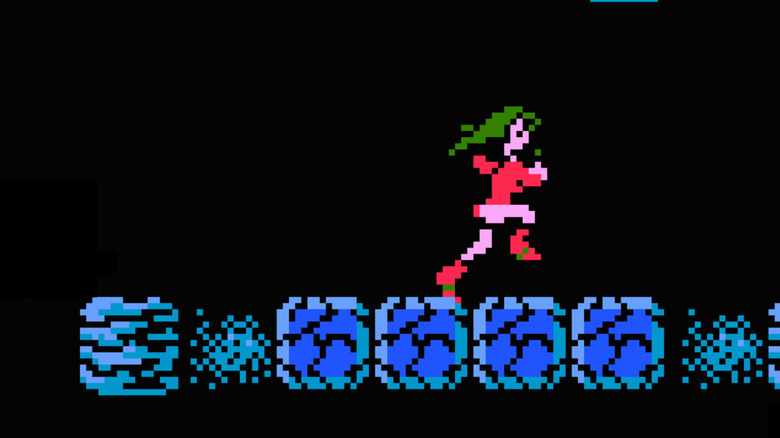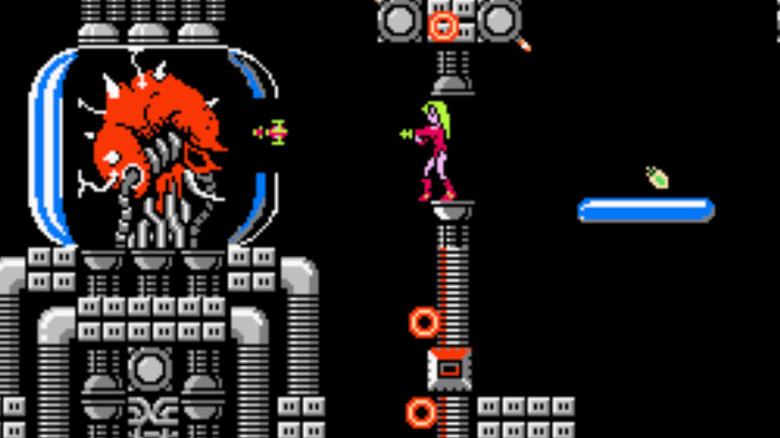The Infamous Metroid Cheat Code That Didn't Exist In Japan
From the Konami Code to God Mode in the original "Doom," retro games incorporated some classic cheat codes and easter eggs that have created fond memories for fans. Whether they were intentionally placed in the game or resulted from some coding mishap, nearly every big-name title from the 80s and 90s had at least one infamous secret — and for "Metroid," the most famous is probably the "JUSTIN BAILEY" code from the original 1986 entry.
If you typed "JUSTIN BAILEY" into the game's password menu, it would start you roughly halfway through the game with some sweet upgrades unlocked. Most notably of all, Samus appeared in a suitless sprite with all the benefits and abilities of her suit still active. The code became infamous enough amongst players to end up in publications like Nintendo Power (per Den of Geek).
Maybe the most interesting part? This code was exclusive to the North American and European releases of "Metroid." And the password itself might actually be a fluke of coding that doesn't mean anything at all!
The truth about Justin Bailey
The reason the "JUSTIN BAILEY" code never existed in Japan comes down to the fact that the game underwent some changes when it was localized from the Famicom to the Nintendo Entertainment System. Unfortunately, the NES version didn't have save slots like the Famicom release did, instead asking players to use a passcode system to retain their game progress.
Essentially, the NES version of "Metroid" would give players a passcode at every death that could be inputted at the Password Screen in the main menu. This would allow players to restart the game in the biome where they perished. Of course, this also meant that you could enter any such passcode, regardless of whether you'd played the game or not. As long as you knew the right code, you could start the game with an overpowered loadout.
Subsequently, "JUSTIN BAILEY" became a gaming urban legend that never quite made it to the country the game was originally developed in. This naturally begs the question: Why "JUSTIN BAILEY?" Was he a real person?
The Justin Bailey code might not mean anything at all
Given how famous the code became, there were tons of theories as to what it could mean, ranging from a reference to someone related to the developers to a pun on nonexistent Australian slang (per Den of Geek). In truth, it seems that the "JUSTIN BAILEY" code was the result of coincidence, not any intended secret on the developers' parts. Someone likely just typed in the name of someone they knew and discovered that it worked!
According to a GameFAQs breakdown on the passcode system, virtually any string of characters could work as a secret passcode in the NES version of "Metroid," so long as its last two digits could be validated by the system. One Reddit user explains that these last two digits are "computed based on the rest of the password," just to ensure that the game could parse the information and correctly translate it into game data. So long as you're able to figure out a valid end to your code, you could input just about anything to get a valid game state.
The same Reddit post also theorizes that the "JUSTIN BAILEY" code's fame can be attributed to the fact that the code was easy to remember, spelled out a recognizable name, and generated a helpful save state that could be interpreted as a hidden cheat. There's nothing particularly special about it that you can't get from randomly generated codes — in fact, you can even custom-tailor your own with a handy fan-made passcode generator.
At the end of the day, the fact that the code doubles as a person's name is most likely a coincidence — and the fact that the code wasn't a part of the game's Japanese release just deepens its mystique.



